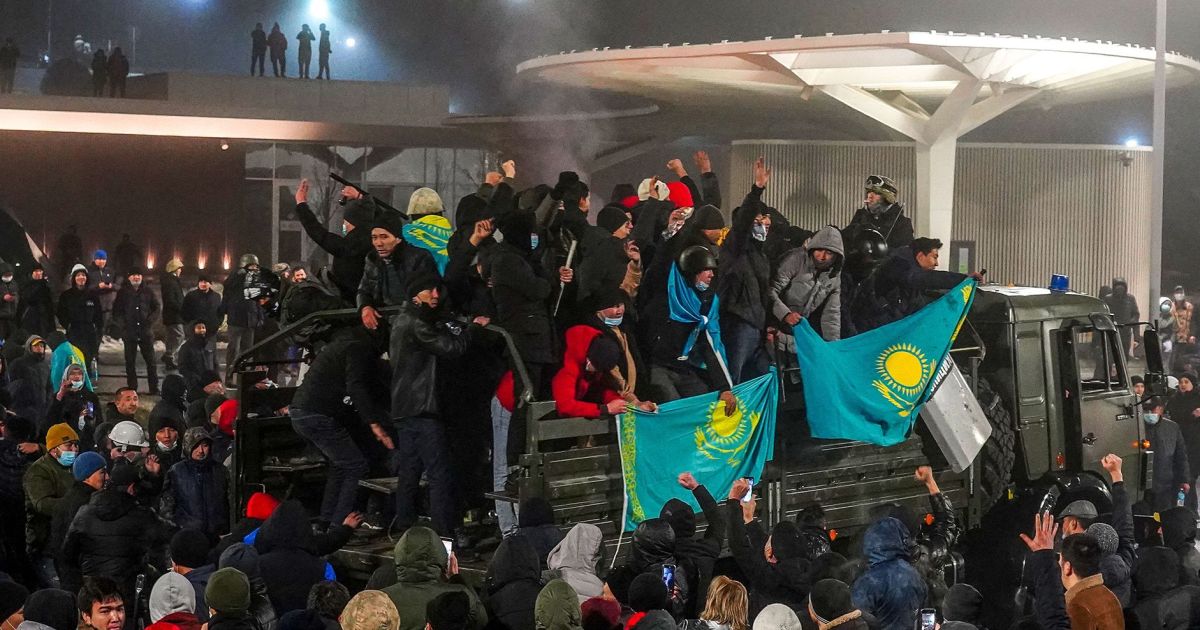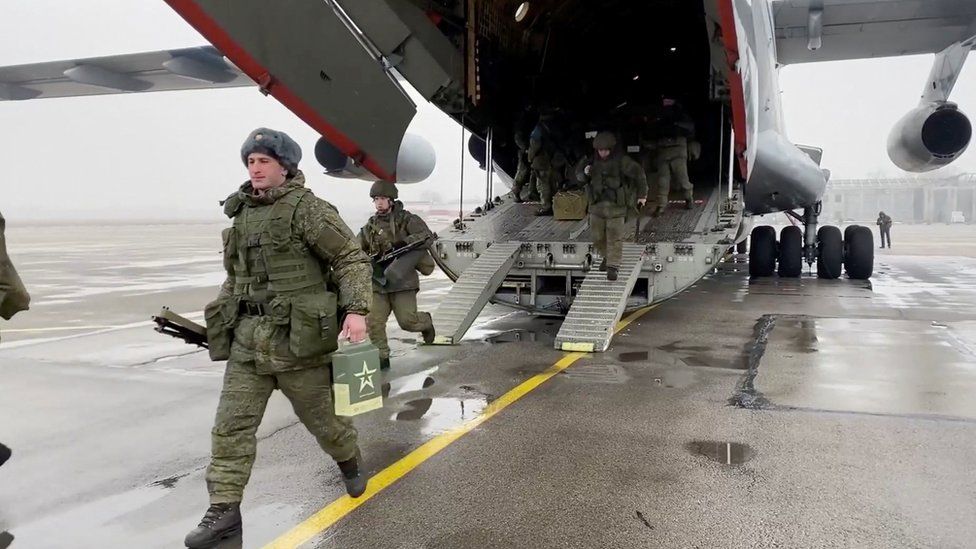
The recent turmoil in Kazakhstan brings back to the surface the question about the critical role of the military force in determining the success or failure of a civil rebellion against a political regime. However, the case of Kazakhstan is special in the sense that it adds another layer that further complicates this important question. That is; the need to explore the moral and the political legitimacy of the political regime’s decision to import a foreign military power to suppress domestic protests led by local civilians.
On January 4th, when thousands of citizens poured into the streets of the main cities of Kazakhstan to protest the increase in fuel prices, President of the State, Kassym-Jomart Tokayev, immediately resorted to the use of excessive force to repress the protests. He did not shy away from publicly ordering his security forces to “shoot to kill without warning” at protesters, in a move that was widely criticized in the West. However, as proven by recent examples from the Arab Spring revolutions, Tokayev’s employment of violent repression backfired; rather than quashing the civil rebellion, the number of protesters and the scale of the protests further increased.
From the tight corner he got stuck in, on January 7th, Tokayev called upon the Russian military to intervene to save his regime, by invoking the Collective Security Treaty Organization (CSTO), which is also labeled as the Russia-led equivalent of NATO in Central Asia. Article 4 of the CSTO allows “sending military troops to help a member state from an external force that threatens its territory or sovereignty.” For that purpose, Tokayev justified the shocking request of foreign troops intervention by claiming that the protests are organized by “terrorists who are trained by foreign powers” to disturb the security and the stability of his country.

Immediately, Russia responded by deploying 2030 troops and 250 pieces of armed equipment to Kazakhstan, under the leadership of the military commander who previously steered Russian military operations in Syria and Ukraine. In a few days, the Russia-led troops successfully repressed the protests and fastened Tokayev’s seat, leaving behind 164 Kazakh citizens killed and more than eight thousand injured, according to official statements by the Kazakh government.
Actually, this is not the first time Russia intervenes militarily in Kazakhstan to suppress local protests. History tells about a similar Russian violent aggression on Kazakhstan citizens, under the eyes and ears of the Kazakh government, in December 1986, when nationalist students led the “Jeltoqsan” rallies to protest the the appointment of the Russia loyalist, Gennady Kolbin, as leader of the republic. According to official estimates, released later on, the repression led to the killing of about 200 civilians, and the injury of more than one thousand Kazakh citizens.
Ironically, Russia had not rushed to mobilize CSTO forces to intervene in cross-border military-related events in Central Asia, that were more urgent and complicated, with the same resolve it showed towards suppressing the domestic political unrest inside Kazakhstan. That includes, for example, the recent war between Armenia and Azerbaijan in 2020 and the border conflict between Kyrgyzstan and Tajikistan in 2021. Yet, unlike other CSTO member states, Kazakhstan represents the southern strategic depth of Russia’s national security. That is not only because Kazakhstan shares the largest area of the southern border of Russia, but also because the political unrest in Kazakhstan is happening at a time when Russia is extremely worried about losing its geopolitical grip over Central Asia, while key international and regional powers are economically or militarily trying to intervene in the oil and mineral rich region.
In the past few years, China’s direct investments in the energy sector in Central Asia countries skyrocketed to tens of billions, especially in its direct neighbor at the western border, Kazakhstan. Meanwhile, the United States, as soon as it withdrew from the mess in Afghanistan, has been gearing up NATO forces for defending Ukraine against Russia’s threats. In parallel, Turkey, which leads the Turkic States Organization, has helped Azerbaijan, in 2020, to win its historical war with the Russia-backed Armenia. Turkey, is also a NATO ally, which is currently siding with Ukraine against Russia.
In light of all the aforementioned geo-political and military developments in Central Asia region, the Russian military intervention in Kazakhstan, last week, bears bigger significance than merely protecting the Tokayev regime from collapsing in face of massive popular protests or even strengthening Tokayev’s position against the deep state of the former dictator, Nursultan Nazarbayev. The mobilization of CSTO, under the command of the Russian military, at this critical time for the region, is a Russian roar aimed to deter geopolitical rivals from attempting to infringe its lair.






Be the first to comment